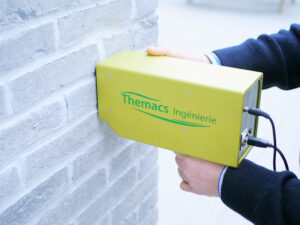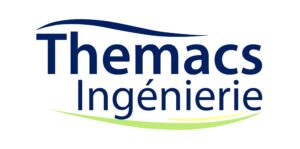
Measurement of thermal emissivity
Jean-Pierre Monchau and Jacques Hameury

You can find article there :
Techniques de l’ingénieur
This article focuses on the study of thermal emissivity, a crucial property in heat exchange and temperature measurement. Emissivity is essential for technologies such as optical pyrometry and thermography, which require a precise understanding of a material’s ability to emit radiation. Its importance is amplified by modern instruments such as thermal imaging cameras, which are becoming increasingly popular due to their lower cost and higher performance.
What can be found in the article :
Main Definitions of Emissivity:
Directional Monochromatic Emissivity: The ratio of the luminance of a material to that of a blackbody for a specific direction and wavelength.
Total Directional Emissivity: Calculated over all wavelengths in a given direction.
Broadband Directional Emissivity: Important for pyrometers and thermal cameras operating in limited spectral bands.
Total Hemispheric Emissivity: Reflects all directions and wavelengths. Essential for heat balance and radiative exchanges between surfaces.
Calculating and measuring emissivity:
The calculation of emissivity depends on the complex index of the material, influenced by polarisation and the dielectric or metallic nature of the material. Dielectric materials show emissivities that are mainly driven by refractive index, while roughness affects metals more.
The various methods of measuring emissivity include:
Calorimetric methods: Used to measure total hemispherical emissivity, they require controlled environments due to sensitivity to heat transfer by convection and conduction.
Radiometric methods: involve the comparison of luminances between the sample and a black body. They use configurations such as infrared detection systems equipped with filters or spectrometers for different spectral bands.
Reflectometric methods: Based on the measurement of the reflection factor, these methods are indirect and often applied with integrating spheres to evaluate the reflected radiation.
Measurement Challenges and Uncertainties:
Emissivity measurements present several challenges, such as the need for accurate sensors for surface temperatures, and the dependence on sample properties such as surface state and temperature. Uncertainties also arise from the use of non-perfectly emissive references or sensors affected by linearity errors.
Applications and examples:
Commercial devices such as the Temp 2000 from AZ-technology and the TIR100-2 emissometer from INGLAS are illustrated. These devices provide accurate measurements but often require prior calibration.
Standards and protocols:
The paper mentions standards such as NF-EN and ASTM, which direct the standardisation of emissivity measurement methods to ensure accuracy and uniformity in results.
Conclusions:
Although emissivity measurement methods are varied and adapted to specific needs, there is no universal device for all conditions. Absolute methods such as calorimetry are reserved for specialist laboratories and are often expensive in terms of resources.
This article emphasises that measuring emissivity is essential and complex, requiring significant technical expertise and specific devices for each application context. Users need to be aware of the limitations and uncertainties associated with the various measurement methods in order to draw accurate and reliable conclusions.
 Measurement of thermal emissivity
Jean-Pierre Monchau and Jacques Hameury
Measurement of thermal emissivity
Jean-Pierre Monchau and Jacques Hameury
 You can find article there : Techniques de l’ingénieur
This article focuses on the study of thermal emissivity, a crucial property in heat exchange and temperature measurement. Emissivity is essential for technologies such as optical pyrometry and thermography, which require a precise understanding of a material’s ability to emit radiation. Its importance is amplified by modern instruments such as thermal imaging cameras, which are becoming increasingly popular due to their lower cost and higher performance.
What can be found in the article :
Main Definitions of Emissivity:
Directional Monochromatic Emissivity: The ratio of the luminance of a material to that of a blackbody for a specific direction and wavelength.
Total Directional Emissivity: Calculated over all wavelengths in a given direction.
Broadband Directional Emissivity: Important for pyrometers and thermal cameras operating in limited spectral bands.
Total Hemispheric Emissivity: Reflects all directions and wavelengths. Essential for heat balance and radiative exchanges between surfaces.
Calculating and measuring emissivity:
The calculation of emissivity depends on the complex index of the material, influenced by polarisation and the dielectric or metallic nature of the material. Dielectric materials show emissivities that are mainly driven by refractive index, while roughness affects metals more.
The various methods of measuring emissivity include:
Calorimetric methods: Used to measure total hemispherical emissivity, they require controlled environments due to sensitivity to heat transfer by convection and conduction.
Radiometric methods: involve the comparison of luminances between the sample and a black body. They use configurations such as infrared detection systems equipped with filters or spectrometers for different spectral bands.
Reflectometric methods: Based on the measurement of the reflection factor, these methods are indirect and often applied with integrating spheres to evaluate the reflected radiation.
Measurement Challenges and Uncertainties:
Emissivity measurements present several challenges, such as the need for accurate sensors for surface temperatures, and the dependence on sample properties such as surface state and temperature. Uncertainties also arise from the use of non-perfectly emissive references or sensors affected by linearity errors.
Applications and examples:
Commercial devices such as the Temp 2000 from AZ-technology and the TIR100-2 emissometer from INGLAS are illustrated. These devices provide accurate measurements but often require prior calibration.
Standards and protocols:
The paper mentions standards such as NF-EN and ASTM, which direct the standardisation of emissivity measurement methods to ensure accuracy and uniformity in results.
Conclusions:
Although emissivity measurement methods are varied and adapted to specific needs, there is no universal device for all conditions. Absolute methods such as calorimetry are reserved for specialist laboratories and are often expensive in terms of resources.
This article emphasises that measuring emissivity is essential and complex, requiring significant technical expertise and specific devices for each application context. Users need to be aware of the limitations and uncertainties associated with the various measurement methods in order to draw accurate and reliable conclusions.
You can find article there : Techniques de l’ingénieur
This article focuses on the study of thermal emissivity, a crucial property in heat exchange and temperature measurement. Emissivity is essential for technologies such as optical pyrometry and thermography, which require a precise understanding of a material’s ability to emit radiation. Its importance is amplified by modern instruments such as thermal imaging cameras, which are becoming increasingly popular due to their lower cost and higher performance.
What can be found in the article :
Main Definitions of Emissivity:
Directional Monochromatic Emissivity: The ratio of the luminance of a material to that of a blackbody for a specific direction and wavelength.
Total Directional Emissivity: Calculated over all wavelengths in a given direction.
Broadband Directional Emissivity: Important for pyrometers and thermal cameras operating in limited spectral bands.
Total Hemispheric Emissivity: Reflects all directions and wavelengths. Essential for heat balance and radiative exchanges between surfaces.
Calculating and measuring emissivity:
The calculation of emissivity depends on the complex index of the material, influenced by polarisation and the dielectric or metallic nature of the material. Dielectric materials show emissivities that are mainly driven by refractive index, while roughness affects metals more.
The various methods of measuring emissivity include:
Calorimetric methods: Used to measure total hemispherical emissivity, they require controlled environments due to sensitivity to heat transfer by convection and conduction.
Radiometric methods: involve the comparison of luminances between the sample and a black body. They use configurations such as infrared detection systems equipped with filters or spectrometers for different spectral bands.
Reflectometric methods: Based on the measurement of the reflection factor, these methods are indirect and often applied with integrating spheres to evaluate the reflected radiation.
Measurement Challenges and Uncertainties:
Emissivity measurements present several challenges, such as the need for accurate sensors for surface temperatures, and the dependence on sample properties such as surface state and temperature. Uncertainties also arise from the use of non-perfectly emissive references or sensors affected by linearity errors.
Applications and examples:
Commercial devices such as the Temp 2000 from AZ-technology and the TIR100-2 emissometer from INGLAS are illustrated. These devices provide accurate measurements but often require prior calibration.
Standards and protocols:
The paper mentions standards such as NF-EN and ASTM, which direct the standardisation of emissivity measurement methods to ensure accuracy and uniformity in results.
Conclusions:
Although emissivity measurement methods are varied and adapted to specific needs, there is no universal device for all conditions. Absolute methods such as calorimetry are reserved for specialist laboratories and are often expensive in terms of resources.
This article emphasises that measuring emissivity is essential and complex, requiring significant technical expertise and specific devices for each application context. Users need to be aware of the limitations and uncertainties associated with the various measurement methods in order to draw accurate and reliable conclusions.
